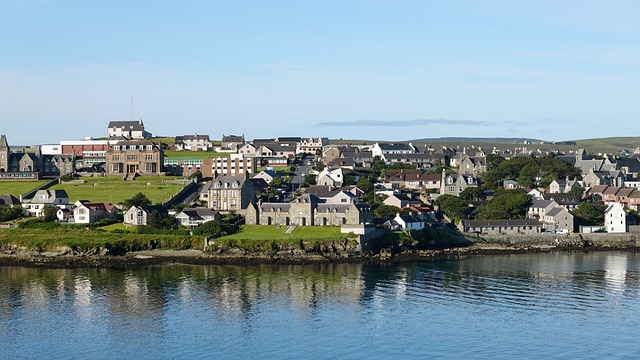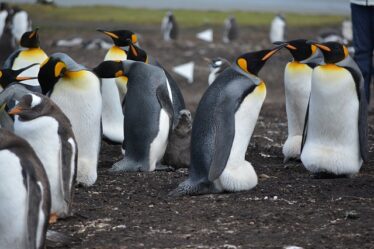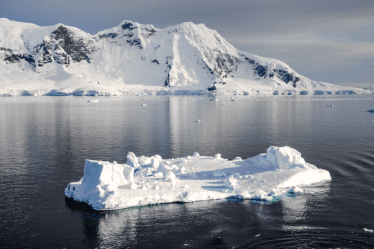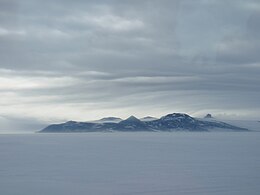
The South Shetland Islands, located off the northern tip of the Antarctic Peninsula, are a captivating and remote archipelago in the icy realms of Antarctica. This stunning collection of islands is known for its dramatic landscapes, diverse wildlife, and its role as a crucial hub for Antarctic exploration. This comprehensive guide will explore the South Shetland Islands, highlighting their unique features, attractions, and practical tips for visitors seeking to experience this extraordinary corner of the world.
Overview
1. Location and Geography
- Location: The South Shetland Islands lie approximately 120 kilometers (75 miles) north of the Antarctic Peninsula, separated by the Drake Passage and the Bransfield Strait. The archipelago consists of about 11 main islands and numerous smaller islets.
- Geography: The islands are characterized by their rugged terrain, including snow-covered mountains, glaciers, volcanic landscapes, and ice-covered shores. The South Shetlands are situated within the Southern Ocean, contributing to their extreme weather conditions and dramatic scenery.
2. History and Exploration
- Early Exploration: The South Shetland Islands were first discovered in 1819 by the British naval expedition led by William Smith. Smith’s expedition was the first to document the islands, and they were named after the Shetland Islands in Scotland.
- Scientific and Research Significance: Over the years, the South Shetlands have become an important site for scientific research and exploration. They serve as a base for various international research stations and expeditions studying the Antarctic environment and wildlife.
Top Attractions and Activities
1. Deception Island
- Volcanic Wonder: Deception Island is one of the most fascinating islands in the South Shetlands, known for its volcanic origin and unique geography. The island features an active volcano with a caldera that forms a natural harbor, known as Port Foster.
- Natural Hot Springs: Visitors can experience natural hot springs on Deception Island, where geothermal heat warms the waters of the caldera. This rare phenomenon provides a unique opportunity for a warm, invigorating soak amidst the icy Antarctic landscape.
- Historic Sites: Deception Island also houses remnants of historic whaling stations and research facilities, offering a glimpse into the island’s past and its role in Antarctic exploration.
2. King George Island
- Research Hub: King George Island is the largest island in the South Shetlands and serves as a major hub for Antarctic research. It is home to several international research stations, including those from Chile, Argentina, and China.
- Diverse Wildlife: The island is known for its diverse wildlife, including penguins, seals, and various bird species. Visitors can explore the island’s rugged terrain and observe these remarkable creatures in their natural habitat.
3. Half Moon Island
- Penguin Colonies: Half Moon Island is renowned for its large colonies of Adélie and chinstrap penguins. The island offers excellent opportunities for wildlife observation and photography, with numerous penguins nesting and raising their chicks.
- Scenic Beauty: The island’s snow-covered peaks and icy shores create a breathtaking backdrop for visitors. The tranquil environment and abundant wildlife make Half Moon Island a highlight of any Antarctic expedition.
4. Livingston Island
- Glacial Landscapes: Livingston Island features impressive glacial landscapes, including the expansive Hurd Glacier. The island’s dramatic ice formations and rugged terrain offer a unique and awe-inspiring experience.
- Wildlife Viewing: The island is also known for its wildlife, including seals, penguins, and seabirds. Visitors can explore the island’s diverse ecosystems and observe its native fauna.
5. Antarctica Peninsula and Nearby Attractions
- Scenic Cruises: Many visitors to the South Shetland Islands embark on scenic cruises around the Antarctic Peninsula, exploring its stunning icebergs, glaciers, and ice-covered landscapes. The peninsula is known for its breathtaking beauty and its role as a gateway to deeper Antarctic exploration.
- Whale Watching: The waters surrounding the South Shetland Islands are prime locations for whale watching. Visitors may encounter orcas, humpback whales, and minke whales, providing unforgettable wildlife experiences.
Practical Information
1. Best Time to Visit
- Summer Season (November to March): The best time to visit the South Shetland Islands is during the Antarctic summer season, which runs from November to March. During this period, the weather is relatively milder, with longer daylight hours and better conditions for wildlife observation and exploration.
- Winter Season (April to October): The winter season is characterized by extreme cold, darkness, and harsh weather conditions. Most visitors choose to explore the South Shetlands during the summer months when the environment is more accessible.
2. Getting There
- Expedition Cruises: The most common way to visit the South Shetland Islands is by embarking on an Antarctic expedition cruise. These cruises depart from Ushuaia, Argentina, or Punta Arenas, Chile, and offer guided tours and excursions around the South Shetlands and other Antarctic destinations.
- Air Travel: Some tours may include flights to research stations or landing sites within the South Shetland Islands. However, access is typically limited to expedition cruises due to the remote and challenging nature of the region.
3. Accommodation
- Expedition Ships: Accommodation in the South Shetland Islands is usually provided on board expedition ships. These vessels are equipped with comfortable cabins, dining facilities, and observation decks, offering a unique and immersive experience in the Antarctic environment.
- Research Stations: For those participating in scientific expeditions or research programs, accommodations may be available at international research stations on King George Island and other sites. These facilities are typically equipped for researchers and may have limited availability for tourists.
4. Safety and Regulations
- Environmental Protection: Visitors to the South Shetland Islands must adhere to strict environmental regulations designed to protect the fragile Antarctic ecosystem. This includes guidelines for wildlife interaction, waste disposal, and minimizing human impact on the environment.
- Safety Precautions: The Antarctic environment presents unique challenges, including extreme cold, unpredictable weather, and rugged terrain. Visitors should be prepared for these conditions and follow safety instructions provided by expedition staff and guides.
Conclusion
The South Shetland Islands are a remote and enchanting destination, offering a unique opportunity to explore one of the most pristine and untouched regions of the world. With their dramatic landscapes, diverse wildlife, and rich history, the South Shetlands provide an unforgettable experience for adventurous travelers and nature enthusiasts. Whether you’re soaking in natural hot springs on Deception Island, observing penguin colonies on Half Moon Island, or cruising through the icy waters of the Antarctic Peninsula, the South Shetland Islands promise an extraordinary journey into the heart of Antarctica’s frozen wilderness.


